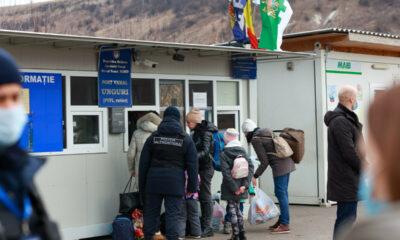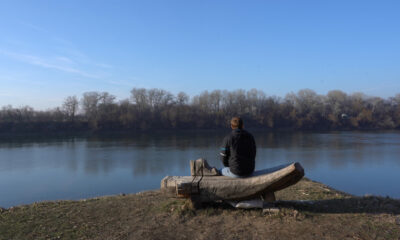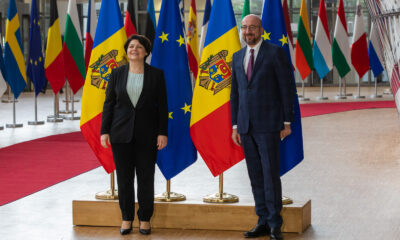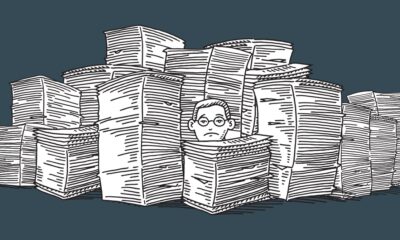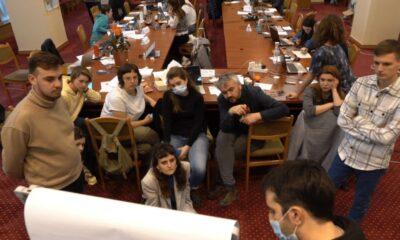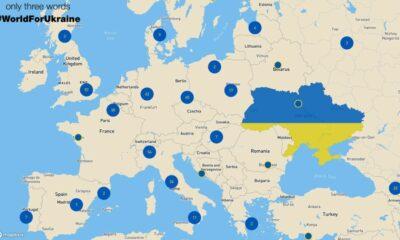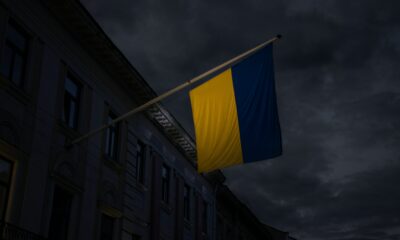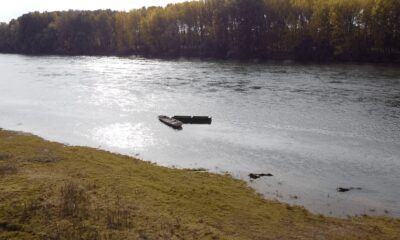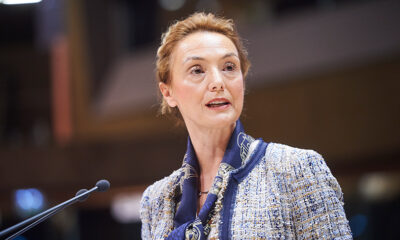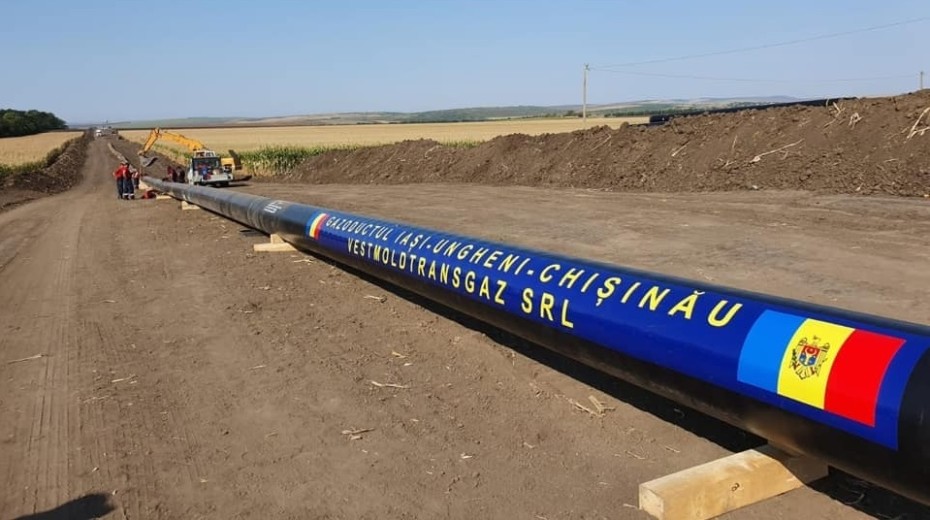
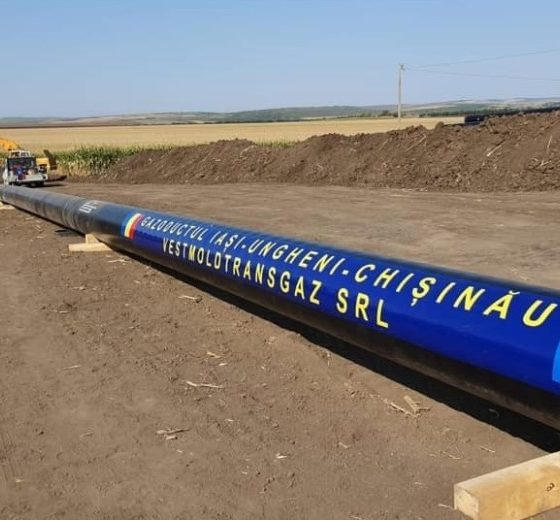
Economy
Iasi-Ungheni-Chisinau gas pipeline: becoming an alternative solution for Moldova
Natural gas supply for the Republic of Moldova is, nowadays, obtained almost 100% from imports. Mainly, it is provided by the Russian Federation through the gas transmission infrastructure of Ukraine. For many years, the supply of natural gas at a ‘preferential’ price has been the control lever of the Moscow government.
When the dissensions between Russia and Ukraine became a real threat to Moldova, the entire country risking to face an energy crisis in case an agreement of gas transit through Ukraine wouldn’t be reached, it became clear that Moldova really needs a long-term alternative solution.
See also: Where will the Republic of Moldova take its necessary supply of natural gas from?
For the moment, the contract of “Moldovagaz” (the main company in the Moldovan energy sector) with “Gazprom” (the Russian natural gas supplier) was extended until the end of the year. Then, a new agreement for 3 years will be negotiated.
According to the main technical-economic indicators of “Moldovagaz” for 2019, the total volume of purchased natural gas was 1.057 billion cubic meters, with an average yearly price of $233.67 per 1000 cubic meters (final delivery price).
When comparing the selling price of the Russian natural gas, it can be observed that the resource is sold at a lower price (-24%) in the European countries as compared to the CIS countries, including Moldova. It is true that the average price the Republic of Moldova will pay in 2020 could be about $30 lower than forecasted (from $133.56 for 1000 cubic meters in the 3rd quarter to $100 in the 4th quarter). The estimates show that, generally, the price could continue to fall. However, that wouldn’t mean a reduction in the final price for consumers of more than 10%, as the director of “Moldovagaz”, Vadim Ceban, announced.
Therefore, there is a plausible reason to speed up the process of supplying from alternative sources, so that the competition can do its job and cancel the monopoly prices on the Moldovan energy market. Still, the director of “Moldovagaz” claimed that, today, it is more convenient to buy from “Gazprom”, even though requests for cooperation are already being received from Romanian natural gas suppliers. “Requests for cooperation are already received from some Romanian suppliers. We will operate according to European rules. First, we will have to see what the economic aspect, the costs and the routes are,” Ceban said.
The Iasi-Ungheni-Chisinau pipeline potential
In August 2020, the Ministry of Economy and Infrastructure of the Republic of Moldova announced that the Ungheni-Chisinau segment of the gas transmission pipeline has been finished.
The pipeline has a length of 120 km and aims to increase the country’s energy security by diversifying the sources of natural gas supply of the Republic of Moldova.
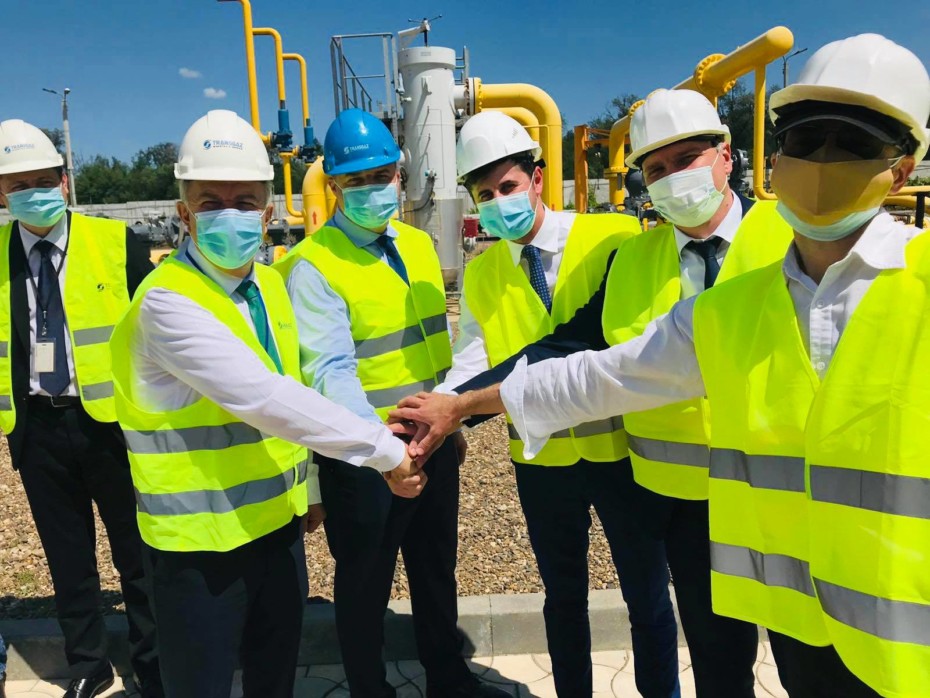
Source: mei.gov.md
According to the ministry’s information, it can ensure the transmission of natural gas in a volume of 1.5 billion cubic meters per year. After the completion of the additional Romanian segment Onesti-Gheraesti-Letcani in 2021, along with 2 compression stations, the transmission capacity could increase to 2.2 billion cubic meters per year.
The pipeline will be able to provide about 75% of the average consumption of the Republic of Moldova (including the Transnistrian region) or about 60% of the average consumption of the country during the cold period of the year.
The construction works of the Ungheni-Chisinau pipeline segment started on February 18, 2019, having an estimated value of about 80 million euro. The whole project (Iasi-Ungheni-Chisinau pipeline) was built by the Romanian company Transgaz and co-financed by the European Regional Development Fund (ERDF), having a total cost of 150 million euro. “The Ungheni-Chișinău gas pipeline will supply Moldova with gas from the Caspian Sea, the North Sea, Northern Greece, and Norway,” is mentioned in a note of the European Commission.
Recently, the European Bank for Reconstruction and Development (EBRD) communicated its intention of acquiring a 25% stake in Vestmoldtransgaz – the Moldovan gas transmission company that is operating the newly built Ungheni-Chisinau gas pipeline. The EBRD announced its investment of €20 million as part of a capital increase in Vestmoldtransgaz.
At the same time, the pipeline segment from Iasi (Romania) to Ungheni (the Republic of Moldova) was put into operation in August 2014 already. The first gas deliveries were made in March 2015, according to a report of the National Institute for Economic Research. However, the segment between Iasi and Ungheni transported natural gas for only 16 days back in 2015. In total, only 669 000 cubic meters were delivered. Transgaz representatives claimed that there was no further demand from the Moldovan authorities.
Currently, the full use of pipeline is limited by several factors: the lack of an agreement between Moldovan and Romanian authorities, non-competitive prices of the Romanian natural gas and the difference of pressure in the gas transmission system – this is why the additional Onesti-Gheraesti-Letcani pipeline segment, with the corresponding compression stations, is needed.
At the regional level, the alternative supply of natural gas could be provided by such countries as Norway, the Netherlands, Great Britain, Ukraine, Romania, Poland, Germany, etc. At the global level, the main competitors of Russia when it comes to natural gas reserves are Iran and Turkmenistan. Given the fact that the natural gas transmission system in Turkey is interconnected with Iran, Europe could also benefit from natural gas supply from Iran and Turkmenistan.
Moldova surely obtains a bigger choice of natural gas supply with the Iasi-Ungheni-Chisinau pipeline. It seems that the main problem here is related to the political will in Chisinau, which still remains unchangeable.
Photo: Vlad Gira| Facebook
Society
“They are not needy, but they need help”. How Moldovan volunteers try to create a safe environment for the Ukrainian refugees
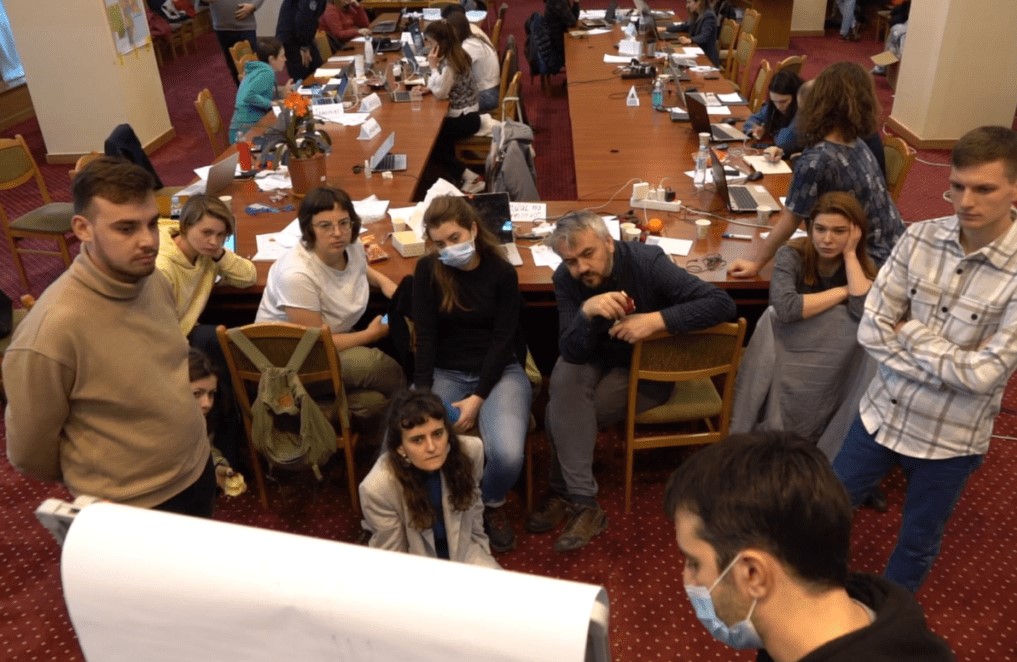
At the Government’s ground floor, the phones ring constantly, the laptop screens never reach standby. In one corner of the room there is a logistics planning meeting, someone has a call on Zoom with partners and donors, someone else finally managed to take a cookie and make some coffee. Everyone is exhausted and have sleepy red eyes, but the volunteers still have a lot of energy and dedication to help in creating a safe place for the Ukrainian refugees.
“It’s like a continuous bustle just so you won’t read the news. You get home sometimes and you don’t have time for news, and that somehow helps. It’s a kind of solidarity and mutual support,” says Vlada Ciobanu, volunteer responsible for communication and fundraising.
The volunteers group was formed from the very first day of war. A Facebook page was created, where all types of messages immediately started to flow: “I offer accommodation”, “I want to help”, “I want to get involved”, “Where can I bring the products?”, “I have a car and I can go to the customs”. Soon, the authorities also started asking for volunteers’ support. Now they all work together, coordinate activities and try to find solutions to the most difficult problems.
Is accommodation needed for 10, 200 or 800 people? Do you need transportation to the customs? Does anyone want to deliver 3 tons of apples and does not know where? Do you need medicine or mobile toilets? All these questions require prompt answers and actions. Blankets, sheets, diapers, hygiene products, food, clothes – people bring everything, and someone needs to quickly find ways of delivering them to those who need them.
Sometimes this collaboration is difficult, involves a lot of bureaucracy, and it can be difficult to get answers on time. “Republic of Moldova has never faced such a large influx of refugees and, probably because nobody thought this could happen, a mechanism of this kind of crisis has not been developed. Due to the absence of such a mechanism that the state should have created, we, the volunteers, intervened and tried to help in a practical way for the spontaneous and on the sport solutions of the problems,” mentions Ecaterina Luțișina, volunteer responsible for the refugees’ accommodation.
Ana Maria Popa, one of the founders of the group “Help Ukrainians in Moldova/SOS Українці Молдовa” says that the toughest thing is to find time and have a clear mind in managing different procedures, although things still happen somehow naturally. Everyone is ready to intervene and help, to take on more responsibilities and to act immediately when needed. The biggest challenges arise when it is necessary to accommodate large families, people with special needs, for which alternative solutions must be identified.
Goods and donations
The volunteers try to cope with the high flow of requests for both accommodation and products of all kinds. “It came to me as a shock and a panic when I found out that both mothers who are now in Ukraine, as well as those who found refuge in our country are losing their milk because of stress. We are trying to fill an enormous need for milk powder, for which the demand is high and the stocks are decreasing”, says Steliana, the volunteer responsible for the distribution of goods from the donation centers.
Several centers have been set up to collect donations in all regions of Chisinau, and volunteers are redirecting the goods to where the refugees are. A system for processing and monitoring donations has already been established, while the volunteer drivers take over the order only according to a unique code.
Volunteers from the collection centers also do the inventory – the donated goods and the distributed goods. The rest is transported to Vatra deposit, from where it is distributed to the placement centers where more than 50 refugees are housed.
When they want to donate goods, but they don’t know what would be needed, people are urged to put themselves in the position of refugees and ask themselves what would they need most if they wake up overnight and have to hurriedly pack their bags and run away. Steliana wants to emphasise that “these people are not needy, but these people need help. They did not choose to end up in this situation.”
Furthermore, the volunteer Cristina Sîrbu seeks to identify producers and negotiate prices for products needed by refugees, thus mediating the procurement process for NGOs with which she collaborates, such as Caritas, World Children’s Fund, Polish Solidarity Fund, Lifting hands, Peace Corps and others.
One of the challenges she is facing now is the identifying a mattress manufacturer in the West, because the Moldovan mattress manufacturer that has been helping so far no longer has polyurethane, a raw material usually imported from Russia and Ukraine.
Cristina also needs to find solutions for the needs of the volunteer groups – phones, laptops, gsm connection and internet for a good carrying out of activities.
Hate messages
The most difficult thing for the communication team is to manage the hate messages on the social networks, which started to appear more often. “Even if there is some sort of dissatisfaction from the Ukrainian refugees and those who offer help, we live now in a very diverse society, there are different kind of people, and we act very differently under stress,” said Vlada Ciobanu.
Translation by Cătălina Bîrsanu
Important
#WorldForUkraine – a map that shows the magnitude of the world’s actions against Russian aggression

The international community and volunteers from all over te world have launched #WorldForUkraine as a platform that shows the magnitude of the world’s actions against the Russian aggression. In a digital world – it is an interactive map of public support of Ukrainians under the hashtag #WorldForUkraine – rallies, flash mobs, protests around the world. In the physical dimension – it is your opportunity to take to the streets and declare: “No to Putin’s aggression, no to war.”
„Today, along with the political and military support, emotional connection with the civilized world and truthful information are extremely important for Ukraine. The power to do it is in your hands. Join the #WorldForUkraine project and contribute to the victorious battle against the bloodshed inflicted on Ukraine by the aggression of the Russian Federation”, says the „about the project” section of the platform.
Go to the streets — Tell people — Connect and Unite — Become POWERFUL
Volunteers have launched #WorldForUkraine as a platform that shows the magnitude of the world’s actions against Russian aggression. In digital world – it is an INTERACTIVE MAP of public support of Ukrainians worldforukraine.net under the hashtag #WorldForUkraine – rallies, flash mobs, protests around the world. In the physical dimension – it is your opportunity to take to the streets and declare: “No to Putin’s aggression, no to war.” There you may find information about past and future rallies in your city in support of Ukraine. This is a permanent platform for Ukrainian diaspora and people all over the world concerned about the situation in Ukraine.
So here’s a couple of things you could do yourself to help:
* if there is a political rally in your city, then participate in it and write about it on social media with geolocation and the hashtag #WorldForUkraine
* if there are no rallies nearby, organize one in support of Ukraine yourself, write about it on social media with geolocation adding the hashtag #WorldForUkraine
The map will add information about gathering by #WorldForUkraine AUTOMATICALLY
Your voice now stronger THAN ever
All rallies are already here: https://worldforukraine.net
Important
How is Moldova managing the big influx of Ukrainian refugees? The authorities’ plan, explained
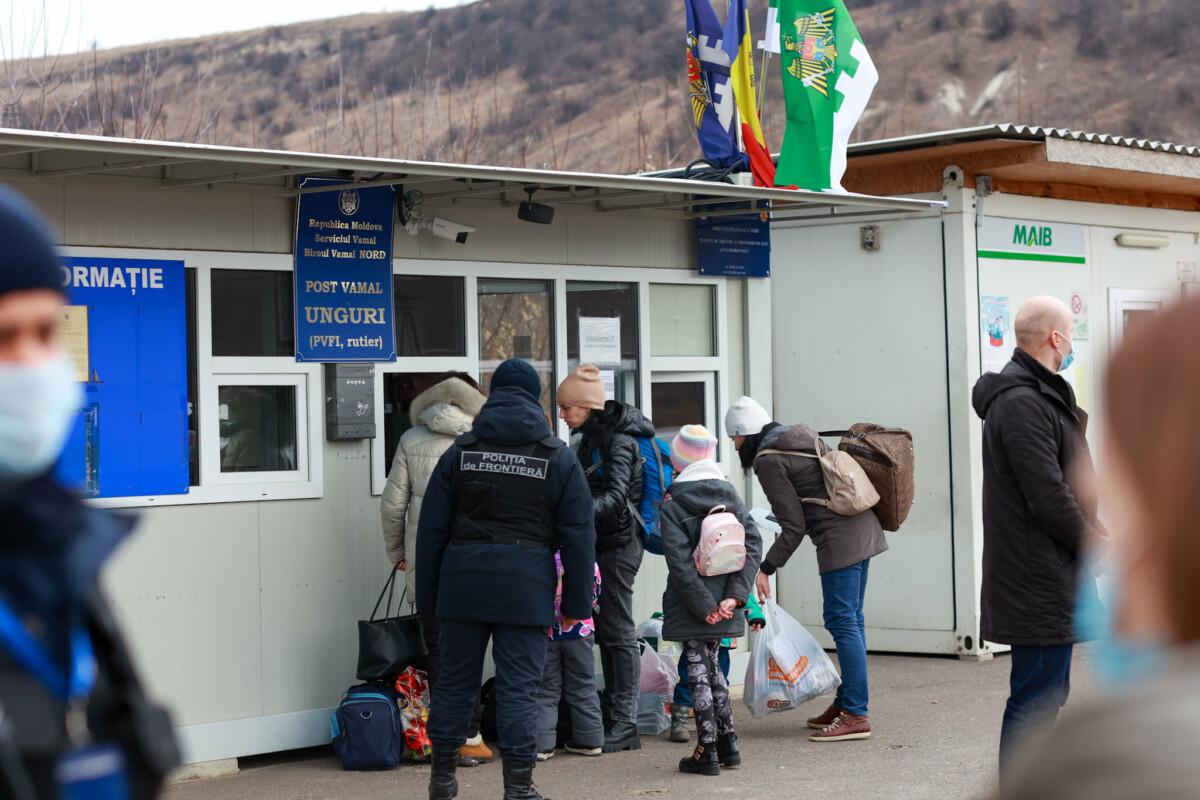
From 24th to 28th of February, 71 359 Ukrainian citizens entered the territory of Republic of Moldova. 33 173 of them left the country. As of this moment, there are 38 186 Ukrainian citizens in Moldova, who have arrived over the past 100 hours.
The Moldovan people and authorities have organized themselves quickly from the first day of war between Russia and Ukraine. However, in the event of a prolonged armed conflict and a continuous influx of Ukrainian refugees, the efforts and donations need to be efficiently managed. Thus, we inquired about Moldova’s long-term plan and the state’s capacity to receive, host, and treat a bigger number of refugees.
On February 26th, the Ministry of Labor and Social Protection of Moldova approved the Regulation of organization and functioning of the temporary Placement Center for refugees and the staffing and expenditure rules. According to the Regulation, the Centers will have the capacity of temporary hosting and feeding at least 20 persons, for a maximum of 3 months, with the possibility of extending this period. The Centers will also offer legal, social, psychological, and primary medical consultations to the refugees. The Center’s activity will be financed from budget allocations, under Article 19 of Provision no. 1 of the Exceptional Situations Commission from February 24th, 2022, and from other sources of funding that do not contravene applicable law.
The Ministry of Inner Affairs and the Government of Moldova facilitated the organization of the volunteers’ group “Moldova for Peace”. Its purpose is to receive, offer assistance and accommodation to the Ukrainian refugees. The group is still working on creating a structure, registering and contacting volunteers, etc. It does not activate under a legal umbrella.
Lilia Nenescu, one of the “Moldova for Peace” volunteers, said that the group consists of over 20 people. Other 1700 registered to volunteer by filling in this form, which is still available. The group consists of several departments:
The volunteers’ department. Its members act as fixers: they’re responsible for connecting the people in need of assistance with the appropriate department. Some of the volunteers are located in the customs points. “The Ministry of Inner Affairs sends us every day the list of the customs points where our assistance is needed, and we mobilize the volunteers”, says Lilia Nenescu.
The Goods Department manages all the goods donated by the Moldavian citizens. The donations are separated into categories: non-perishable foods and non-food supplies. The volunteers of this department sort the goods into packages to be distributed.
The Government intends to collect all the donations in four locations. The National Agency for Food Safety and the National Agency for Public Health will ensure mechanisms to confirm that all the deposited goods comply with safety and quality regulations.
The Service Department operates in 4 directions and needs the volunteer involvement of specialists in psychology, legal assistance (the majority of the refugees only have Ukrainian ID and birth certificates of their children); medical assistance; translation (a part of the refugees are not Ukrainian citizens).
According to Elena Mudrîi, the spokesperson of the Ministry of Health, so far there is no data about the number of Covid-19 positive refugees. She only mentioned two cases that needed outpatient medical assistance: a pregnant woman and the mother of a 4-day-old child.
The Accommodation Department. The volunteers are waiting for the centralized and updated information from the Ministry of Labor about the institutions offering accommodation, besides the houses offered by individuals.
The Transport Department consists of drivers organized in groups. They receive notifications about the number of people who need transportation from the customs points to the asylum centers for refugees.
The municipal authorities of Chișinău announced that the Ukrainian children refugees from the capital city will be enrolled in educational institutions. The authorities also intend to create Day-Care Centers for children, where they will be engaged in educational activities and will receive psychological assistance. Besides, the refugees from the municipal temporary accommodation centers receive individual and group counseling.
In addition to this effort, a group of volunteers consisting of Ana Gurău, Ana Popapa, and Andrei Lutenco developed, with the help of Cristian Coșneanu, the UArefugees platform, synchronized with the responses from this form. On the first day, 943 people offered their help using the form, and 110 people asked for help. According to Anna Gurău, the volunteers communicate with the Government in order to update the platform with the missing data.
Translation from Romanian by Natalia Graur


